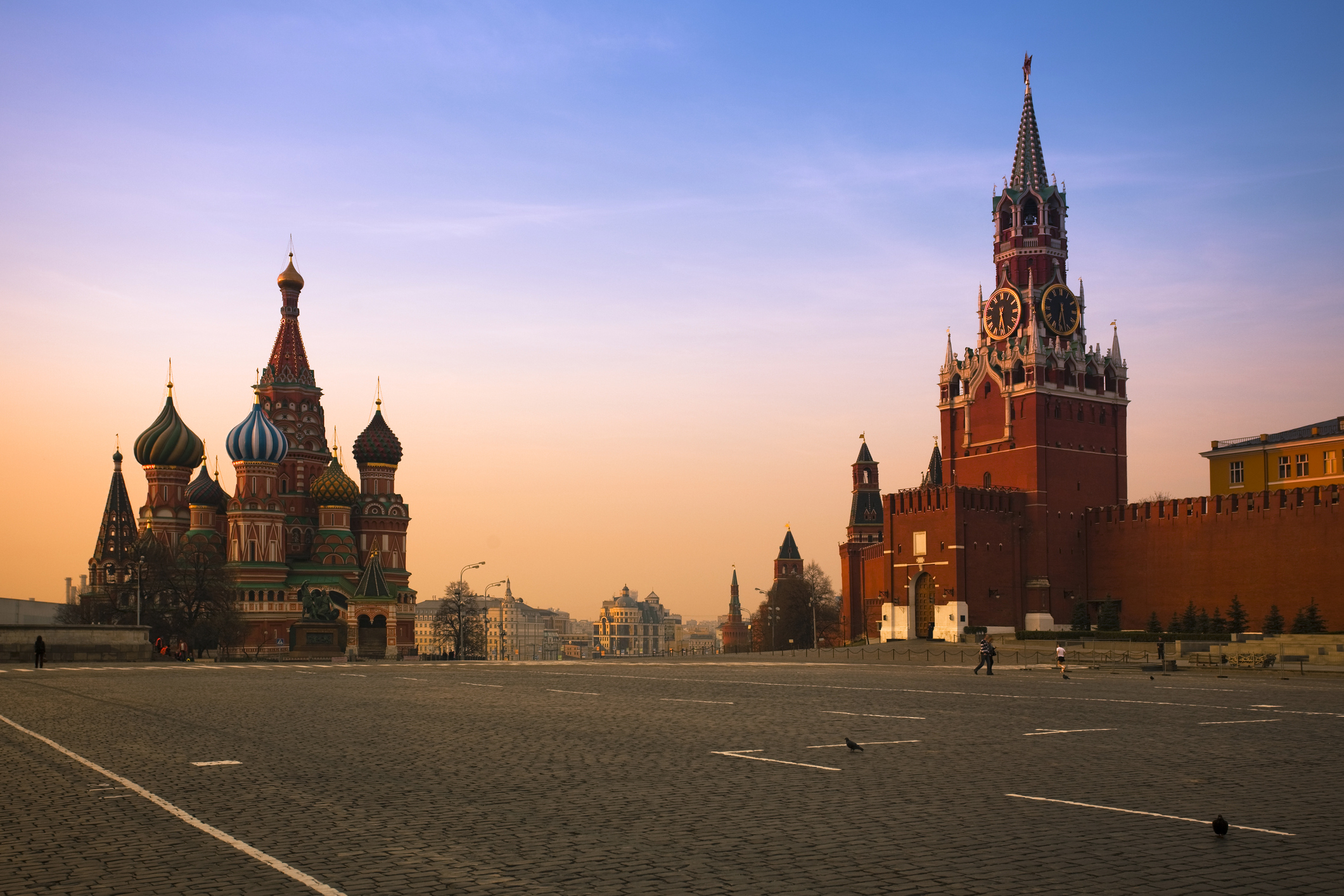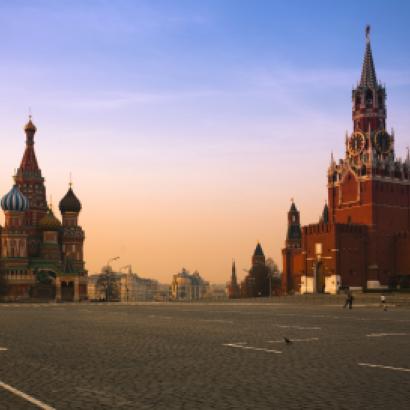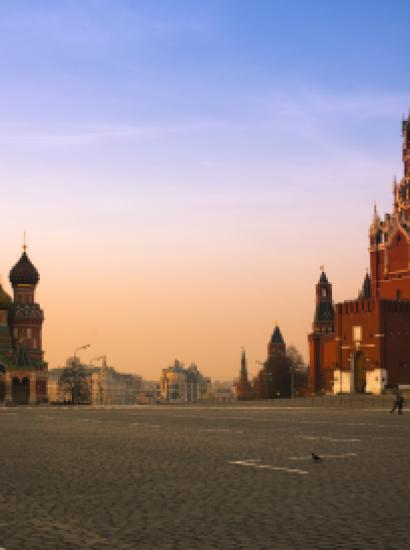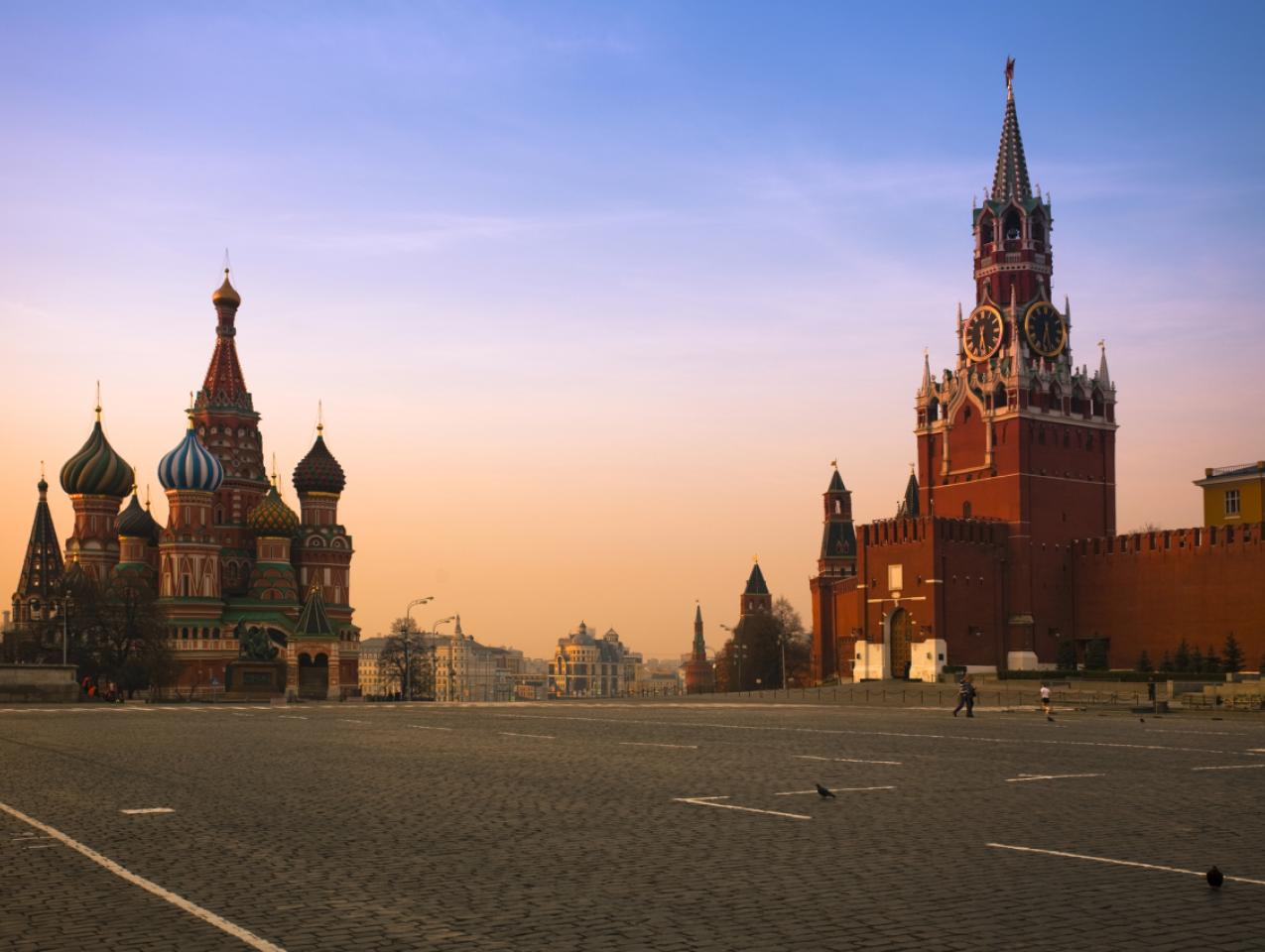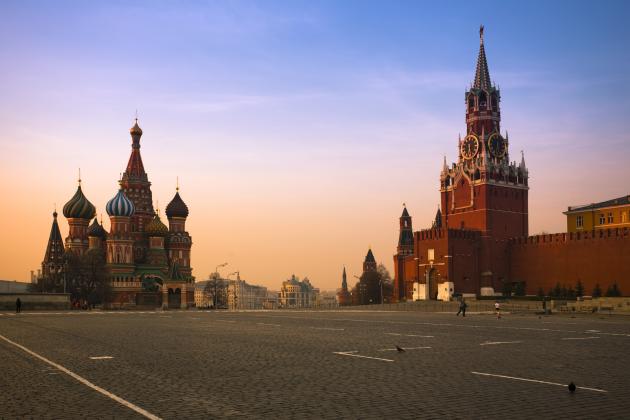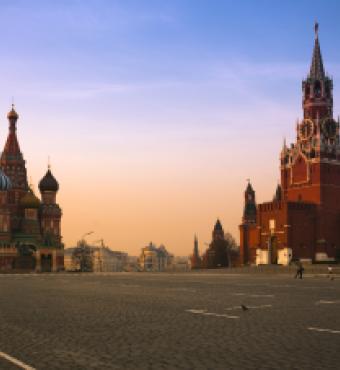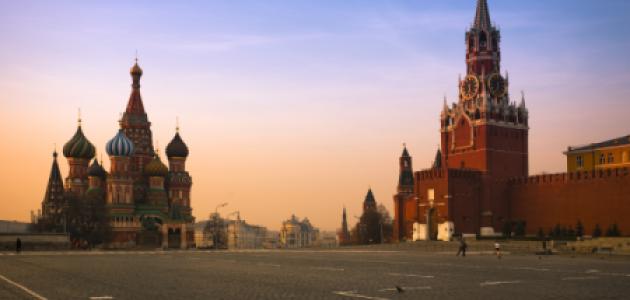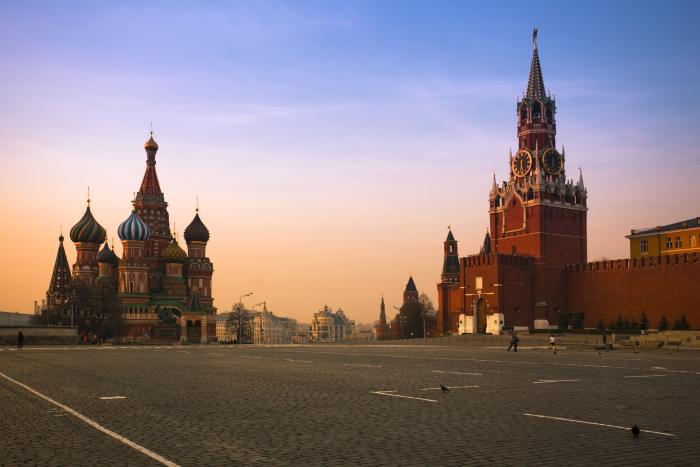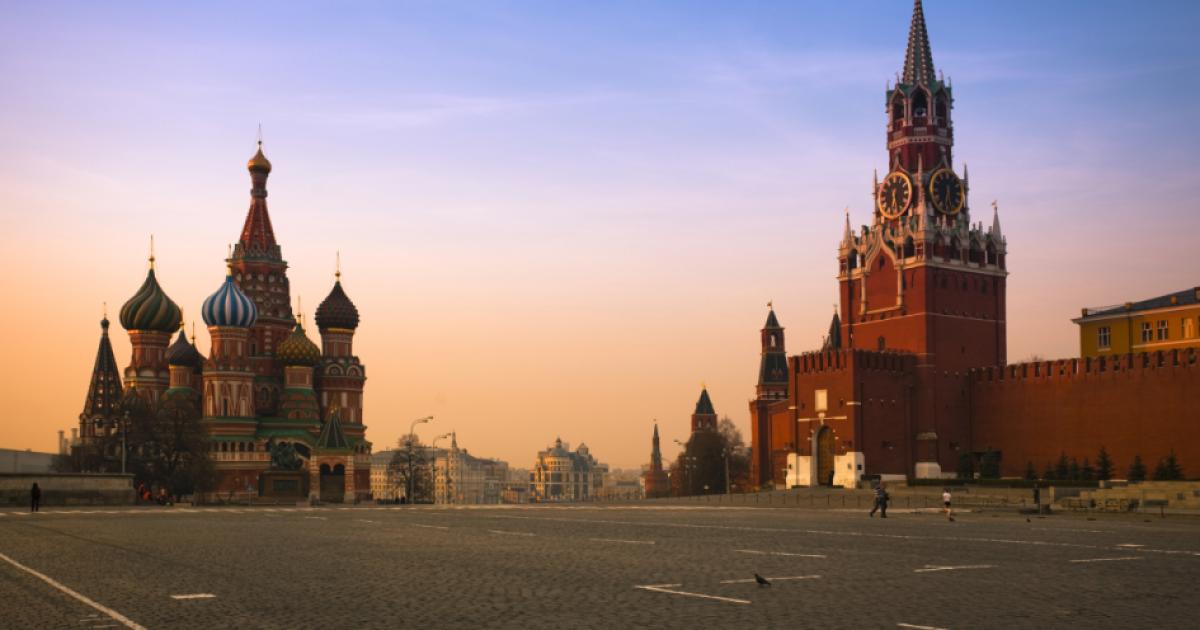Advancing technologies and demographics portend disruption in Russia, as in many other parts of the world, but volatility has been the rule rather than the exception in this historic power. The fall of the Soviet Union left modern Russia in a state of disrepair. Its economy collapsed alongside its government. Its population decreased, and fertility plummeted. To those living in Russia at the time, it was deeply destabilizing.
A decade later, Russia’s future looked brighter. Its economy rebounded in the 2000s, driven by the country’s oil and gas industry. President Vladimir Putin brought stability back to Moscow. But President Putin began instituting regressive policies, and the country suffered from the financial crisis of 2008 and the collapse in the Ruble and oil prices. The imposition of sanctions in 2014, in response to Russia’s aggressive actions in Ukraine, further darkened the country's outlook.
Now Russia faces a bleak demographic future: a shrinking working-age population and an aging society. It has a weak, low-tech, slowly growing economy and is ruled by an autocratic regime. Meanwhile it faces the uncertain effects from a changing climate. But it could also be said that Russians today live better than they have for much of their history, and compared to the 1990s, Russia is stable.
Former Russian Foreign Minister Igor Ivanov writes that the world is at a “bifurcation point.” He argues the existing international system cannot last, and the transition to a new one will be either evolutionary—slow and steady—or revolutionary—swift and painful. How will Russia adapt to the rapidly changing world?
On October 3, 2018, former secretary of state and Hoover Institution distinguished fellow George Shultz convened a discussion of that question. It addressed how Russia will react to changing demographics, the spread of information and communications, emerging technologies—such as artificial intelligence—and new means of producing goods near where they are needed. It further considered the role of Russia’s nuclear weapons and climate change in Russia’s future. What follows reviews the primary conclusions drawn from that discussion and from the papers included in this booklet. It assesses the problems—Russia’s poor demographics, its second-tier high-tech sector, and its authoritarian system—and considers the implications for U.S. strategy in dealing with Russia.
***
The papers prepared for the roundtable describe two competing impulses within Russia’s government: the desire to ensure stability and the urge to modernize and grow. Stephen Kotkin explains, “Russian politics is largely a struggle between those who emphasize the need to gird against perceived threats and prioritize ‘stability,’ versus those who prioritize development, between those who see the outside world as almost exclusively menace and those who see it as primarily opportunity.” In other words, the security services desire security while the finance and economic ministries advocate for development. The security services usually win.
It is important to recall that President Putin sits atop a fractious and volatile government, especially at the elite level. He does not have unitary authority over the state—a large portion of his edicts and policies are not implemented. Some high-level figures urge reforms to address the country’s demographic and technological outlook, such as former finance minister Alexei Kudrin. Others may support the basic structure of the existing Russian regime and its policies but object to Putin's personal leadership of it.
However, President Putin tends to back his security services. Former U.S. ambassador to Russia Michael McFaul writes that “Putin values control over innovation; vertical instead of horizontal arrangements.” While Putin speaks of the need to innovate, Russian policy does not back his words, as David Holloway explains.
If Russia will trend towards stability, what role can it play in the emerging world? What is the Putin administration doing to mitigate the challenges of demographic changes and new technologies? Can Russia have both stability and growth?
Demographics
Russia’s working-age population is steadily declining and will continue to fall for decades. As a result of high mortality rates and an echo of the steep post-USSR fertility drop, Russia is losing a million workers a year. It is also experiencing “brain drain:” many of those leaving are young and well-educated while many of the in-migrants to Russia are low-skilled. As Russia loses the young and educated, it loses scientific expertise. In their absence, it moves in the direction of a petrostate. It is notable, for example, how many Russians work in Silicon Valley or in the flourishing high-tech sector in Israel. Other countries are reaping the benefits of the historic Russian talent for science and mathematics, suggesting that Russia’s problems are rooted in its policies and institutions, not its human capital.
While Russia’s population ages, much of the developing world is growing more populous. Much of Russia looks warily upon this “youth bulge”—the glut of young people emerging primarily in the Southern Hemisphere—seeing a mass of potential extremists or a potential dilution of Russia’s cultural homogeneity. There appears to be little prospect for immigration to offset Russia’s demographic dynamics.
The government has taken steps to address its high mortality rates, low fertility, low life expectancy, and aging population. Life expectancy at birth for men has climbed to over 66 years, but there remains a significant gender disparity; female life expectancy is over 10 years higher. An anti-smoking campaign increased public health awareness and banned smoking in public places, but the next phase—increasing taxes on tobacco products—has stalled. Pro-natal policies implemented in the late-2000s may have helped raise fertility rates. And most notably, the government’s proposal to raise the pension age was met with protests across the country. The final decision on raising the retirement age for women represents a compromise.
Advanced Technology
In principle, advanced technology could help offset Russia’s loss of workers by increasing productivity. Moreover, if Russia were to incorporate more advanced manufacturing technologies and robotics, its shrinking workforce might reveal itself as a blessing rather than a curse. The country might side-step the potential employment disruption such technologies may cause. But the Putin administration chooses to focus on “stability” and “security” rather than adopting the policies and making the investments that would foster development and deployment of advanced technologies (additive manufacturing, automation, robotics, AI) on a large scale into the economy.
Recent efforts to foster a more dynamic science and technology industry have had mixed results, as seen in the Skolkovo Innovation Center. Although the effort yielded new educational institutions, Skolkovo has failed to approach a Silicon Valley or MIT of Russia despite major investment. However, Russia can count some successes; Yandex, for example, is the lone search engine in the world to compete with Google without substantial government support.
Russian policy choices have hindered the development of the high-tech sector. The government has followed the traditional Russian top-down approach—as opposed to the more organic, bottom-up approach seen in Silicon Valley. The industry suffers from overregulation and pressure from security agencies. The Putin regime has undermined property rights, failed to reform the rule of law, moved away from democratic institutions, and incurred the wrath of the international system through its foreign policy. Foreign investors do not want to invest in Russia—unlike in the oil and gas industry, American tech investors and companies are not obligated to have a presence in Russia—and even Russians themselves do not want to invest there. All told, Russia would seem to lack the institutions, investment climate, culture of entrepreneurship, and rule of law conducive to a vibrant commercial technology sector.
Instead, high-tech investment centers on military technology. In the United States and China, commercial industries and the military work together to strengthen each country’s technological base. Not so in Russia. It is not clear that investing in military technology, absent a parallel supporting and mutually reinforcing commercial industry, will allow Russia to compete with the United States or China. Although Russia and China have explored military technology cooperation, Russia fears becoming a junior partner—or worse yet a client state—to China. China arguably represents the most serious long-term security threat to the Russian state.
But Russia’s military investments have given it effective, asymmetric capabilities, including high-end air and missile defense, cyber capabilities, long-range artillery, and autonomous weapons—to say nothing of its nuclear arsenal. As during the Cold War, Russia will continue to compete with the United States in priority areas, stealing, purchasing, or developing those technologies it views as necessary. And those technologies developed by the military may yet yield civilian benefits; after the fall of the Soviet Union, for example, the majority of high-quality civilian goods came from the military industrial complex. Another problem is that these new technologies, armed drones and cyber in particular, lower the threshold for conflict. At the extreme end of the spectrum, cyber interference in nuclear command and control and early warning systems could potentially lead to use of nuclear weapons. All of the authors spoke of the importance of renewed communications between the United States and Russia, particularly between the two militaries and between technical experts, to reduce the risk of conflict resulting from misperception and miscommunication. The United States and Russia should reconsider cooperative measures to address common security threats, beginning with discrete, accessible steps.
In sum, Vladimir Putin’s rhetoric does not match his actions. He speaks of the need to innovate, saying that a country that rules in AI will rule the future, but has not implemented policies to do so. To the contrary, his faith in central planning and distrust of private initiative—manifest in Russia’s top-down approach—will likely prevent a commercial high-tech sector from flourishing in Russia, and as a consequence Russia will have difficulty competing with the United States and China in military technology.
Information and Communications Revolution
Technological developments that might undermine non-democratic regimes can empower those regimes if they master the technologies, and Russia has done so. It harnessed the networked age to promote nativism and the Putin regime’s goals. Traditional media are largely under government control, and there are growing restrictions on the internet. Three quarters of Russians have internet access. They are connected to each other and to people outside Russia. That connection informs and empowers individuals, and to some extent allows them to organize, but on balance Russian authorities and security services use these tools to greater effect for surveillance and repression.
Russia has conducted cyber attacks of various kinds, including interfering in elections, against the United States, European countries—especially the Baltics—Ukraine, and Georgia. As discussed above regarding military technology, Russian investment in cyber capabilities has yielded a significant offset capability, to which U.S. business and government institutions should respond first with a stronger defense—against those threats that can be defended against. For those threats which cannot be satisfactorily defended against, the U.S. government should build deterrence by establishing real-time reporting systems and defining conduct thresholds and intended responses.
The Economy
The Putin regime’s commitment to stability at the cost of economic and technological development inhibits growth, as discussed previously. Substantial reforms to the rule of law, property rights, and the judiciary are necessary to promote investment.
Russia’s GDP is lower than that of Italy and it has a per capita GDP on par with Portugal. State enterprises represent some 60% of the economy, and the country relies heavily on hydrocarbon exports, which account for more than half of government revenue. The demographic outlook outlined here also constrains Russia’s economy. As it loses workers and highly-educated young people, Russia appears poised for no more than 1% annual GDP growth for years to come, of which technological change might be expected to contribute half.
But as is often the case with Russia, it is important to ask: compared to what? Russia’s economy may appear weak, but it seems sturdy compared to the recent past. International sanctions have hurt its economy, but President Putin enjoys popular support.
Authoritarian regimes, such as Russia’s, depend on cash flow—revenue to the government—for their legitimacy and survival. They tend to thrive when given resources to guarantee steady revenue. If the global energy market moves to a low-carbon future, Russia could seek to leverage its natural gas reserves as a bridge fuel and lean on its zero-carbon civilian nuclear power technologies—the two primary areas of strength in Russia’s energy sector. If hydrocarbon demand peaks earlier than expected, President Putin may find himself in need of new cash sources. He may need to depend more on taxation for sustained revenue, with potential consequences for authoritarian rule.
Climate Change
Traditionally, Russian leaders have put a positive spin on a warming climate. It could, for example, open access to the resource-rich Arctic and allow for agricultural productivity growth. More recent analyses have cast doubt on this rosy assessment, flagging the potential for new natural disasters, changing disease vectors affecting public health, and degradation of existing infrastructure. A changing climate brings widespread costs and demands adaptation. Will the Russian state have the resources and institutions to respond to these novel challenges? Responses to common climate challenges—for example genetic engineering of new drought- and heat-tolerant plants, better public health information sharing, or dealing with an opening Arctic—are promising substantive areas for U.S.-Russian interaction during a period of sensitive relations.
Conclusion
These papers and subsequent discussions set out to understand Russia’s participation in the emerging new world. In some respects, Russia appears to lack the basis for a large role: it has institutional obstacles to commercial technological development; it has an aging society with low fertility; it is losing many of its best and brightest; and it continually antagonizes foreign powers through cyber malfeasance. It could decline toward dependence on China. However, Russia has always been a paradoxical country, a nation seemingly in perpetual decline and yet a permanent fixture in geopolitics.
The volatility of the post-Soviet Union era still impacts domestic politics today. The stability President Putin has brought is highly valued; although public opinion polls in Russia can be suspect, his popularity soared after the intervention in Ukraine and has remained high. Yet the regime appears unstable in the longer term. It struggles to implement domestic policies and faced opposition in its major effort to address the problems brought on by its adverse demographics. Beyond its borders, Russia tends to emphasize the use of broad multinational institutions, in particular the UN, to address matters of international affairs, preferring institutions that operate only by consensus, where it can control the outcome, and opposing “coalitions of the willing.”
Russia generates the economic outlook of a middle power but acts like a great one and aspires to be greater still. And behind all these issues sits Russia’s nuclear stockpile, the largest in the world alongside the United States’.
The United States should work to reopen lines of communication and cooperation with Russia. The way forward is not a grand bargain but discrete, concrete steps to build trust necessary for more consequential steps. Nongovernmental relationships should play a role. Scientific and researcher exchanges and student programs could help the two countries navigate the future of new, developing technologies, such as artificial intelligence. Track II diplomacy and similar programs—which flourished just a decade ago—could establish open communication, while military-to-military exchanges would lessen the risk of catastrophe.
The Russian system is not conducive to sustainable technological development. Its population is getting older and hemorrhaging talent. Its hydrocarbon-driven economy faces an uncertain future. Russia appears headed towards a significant decline, but it has a long history of mastering its circumstances. Despite an underdeveloped high-tech industry, Russia finds a way—as it did during the Soviet era—to compete with the United States in areas that its government considers priorities. It tends to think not in terms of costs and efficiency, as we so often do, but in terms of objectives. That approach has allowed it to achieve its highest priority objectives.
When the West looks at Russia, it sees a nation in decline. But when Russia looks back, it sees a West in decline, which the Putin administration strives to outlast. Here again the question of compared to what arises: Russia compares itself to the United States, to the West, and to China and seeks to survive as a great power.
George Shultz has observed that Russia is a major power, armed with the most dangerous weapons on earth. It will always be important, so the United States must figure out how to work with Russia constructively. It has been done before, and it can be done today even in a new and changing world.







